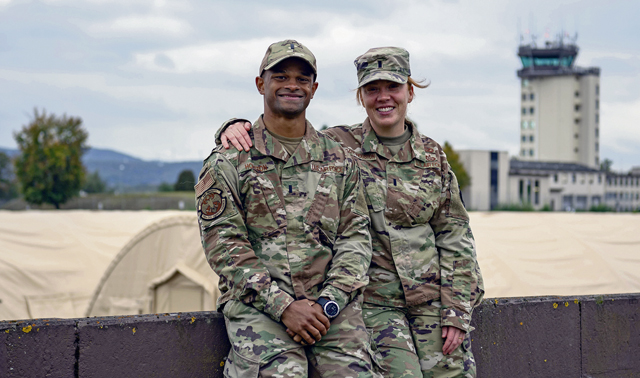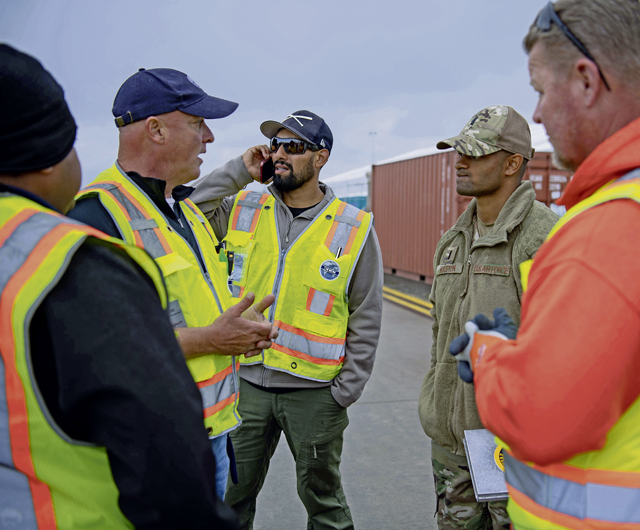Since the beginning of Afghan evacuation support operations at Ramstein Air Base, two engineers have been key players behind the mission’s continued success.
The Houstons, a married couple assigned to the 86th Civil Engineer Group, not only designed the blueprint for the pods, but also ensured their sustainment throughout the course of the Operation Allies Welcome at Ramstein.

1st Lt. Gabriel Houston, 786th Civil Engineer Squadron engineering chief, was tasked at the start of the operation with creating a plan for the buildup of a secure living area for evacuees to lodge in as they awaited movement to other transient locations.
“This is what we signed up for as CE officers,” Houston said. “Our job is contingency bed down and that’s what this is. We get trained on every aspect, from the heating aspect to the electrical and water aspects.”
Houston worked with all of the different squadrons to ensure that the evacuees had all their needs met while they were here.
“There is a strategic impact of him being here on the ground planning things while we’re building them,” U.S. Air Force Maj. Jesse Lantz, 786th CES flight commander, said. “It’s like building a plane while it’s flying. Not too many people across the Air Force would be able to keep calm while guiding this massive strategic undertaking.”

1st Lt. Merrick Choate-Houston, 86 CES installation Management Flight deputy, was on a temporary duty assignment in Romania before being called back to support the operation with her skills as an engineer. Prior to her time as a commissioned civil engineer, Choate-Houston served as an enlisted Farsi linguist. Employing these skills, she was able to better communicate with the evacuee population in the pods and assess their needs as well as any issues they were having.
Choate-Houston came back from Romania to see Ramstein supporting one of the largest, most complex humanitarian airlift operations in history — with her husband at the forefront of it.
“Once I got back and saw everything my husband was doing, and the level of respect that he had garnered with everybody across the pods, it was awesome to be a part of that and to see my husband at his best,” said Choate-Houston.
As operations continued, contractors were brought in to assist with sustainment processes in the pods.
Choate-Houston was responsible for streamlining this transition.
“When you’re in a deployed environment, a turnover happens where one unit leaves and another one comes in,” Choate-Houston said. “I wanted to replicate that here with handing over government operations to the contractors.”
Choate-Houston paired Airmen with contractors to train them on performing maintenance and troubleshooting duties. From that point, Airmen would supervise the contractors as they performed the task to ensure they could handle sustainment operations without supervision.
This is only one example of how Choate-Houston used her problem-solving skills to benefit multiple Airmen and allow them to finally return to their day-to-day duties while contractors continued operations in the pods.
This system empowered Airmen to transition back to their primary missions while successfully maintaining continued operations within the pods. Choate-Houston’s problem-solving ensured the Global Gateway was successful.
“There were a lot of people who were out of their comfort zones trying to solve problems,” Lantz said. “None of those people could solve problems better than the Houstons could.”
The Houstons are currently working to reconstitute materials used in the pods and prepare the flightline for normal function toward the end of what is now an operation that changed the lives of thousands of people.
“Having the opportunity to work side by side on the same problem and do something that’s a once in a lifetime opportunity has been fantastic,” Houston said. “I would do it all over again if I could.”


